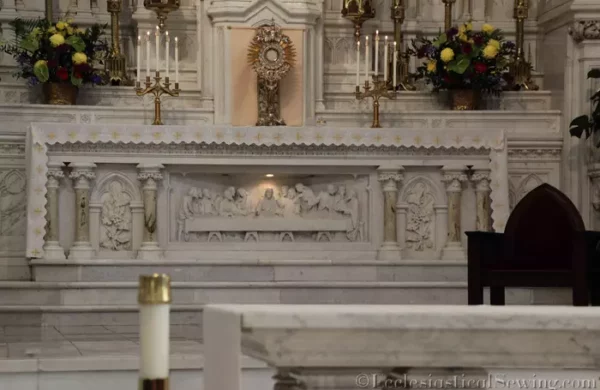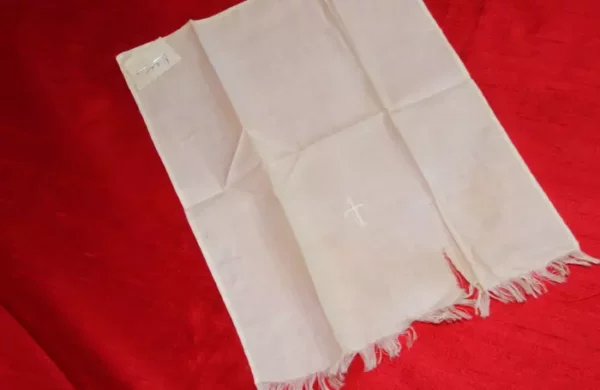
Fair Linens are hand hemmed with a simple slip stitch worked in even tiny stitches. The quality of the hand hemming is determined by the number of stitches made in each inch of length, as well as the evenness of the stitching. To aid in obtaining even, tiny stitches, use a single strand of fine cotton thread such as YLI Heirloom Thread which is a 100/2 size, or a similar fine sewing thread.
Like this:
Like Loading...

The measurement of making an Altar Fair Linen – The altar height: measure from the top edge of the altar to the floor. Measure the width of the altar from the front to the back. Measure the length of the altar from one side to the opposite side. Optional: measure the hang from the top edge down the side of the Fair Linen to match the length of an altar hanging.
Like this:
Like Loading...

Baptismal Towels or Baptismal Napkins may be as simple or elaborate as one desires to make them. The size of this Baptismal Cloth is approximately 19″ x 21″ as the finished size. The embroidery may be a very simple hand-embroidered cross. The hems should be narrow. Now, there may be more specific instructions available in some older Church Vestment Books
Like this:
Like Loading...

Creating a special garment for Holy Baptism—a simple, symbolic white piece to signify putting on the Holiness of Christ. This keepsake, though used briefly, holds significance as part of the Order of Holy Baptism. An easy project with a tiny neckline, a cross or shell design, and simple edges, making it a meaningful and quick creation for a memorable occasion. Perfect for families who wish to cherish the remembrance of their infant’s baptism.
Like this:
Like Loading...





You must be logged in to post a comment.